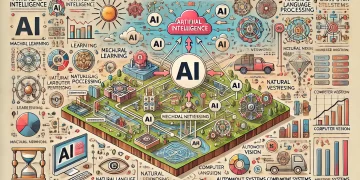Business Rules: The Invisible Force Behind Everyday Decisions
In today’s fast-paced world, businesses make countless decisions every day, many of which follow predefined rules to ensure consistency, fairness, and efficiency. These business rules are the invisible force behind everything from getting a loan to receiving a discount at your favorite store. While most people don’t realize it, business rules shape our daily interactions with companies, making operations smoother for both businesses and customers.
What Are Business Rules?
A business rule is a guideline or condition that defines how a company operates and makes decisions. These rules can be simple, like “customers get free shipping on orders over $50”, or complex, like “a loan application is approved if the applicant has a credit score above 700 and an income over $50,000.” Businesses use these rules to automate processes, ensuring that decisions are made fairly and consistently.
Business rules play a crucial role in ensuring fairness and efficiency. Without them, decisions would be inconsistent, leading to confusion and frustration for customers. They also help businesses reduce errors and speed up decision-making. For example, without clear rules, loan approvals could take weeks instead of minutes, and online stores might struggle to apply discounts correctly.
How Does BRMS Work?
A Business Rules Management System (BRMS) is a software solution that helps businesses make decisions quickly by following predefined rules. For example, when you apply for a loan, a financial institution might use a BRMS to assess your eligibility based on your credit score, income, and debt ratio—automatically approving or rejecting the application based on its programmed rules.
Examples of BRMS in Action
BRMS is used across many industries, including:
- Banking – Automatically approving or denying loans based on financial history.
- Retail & E-commerce – Applying discounts only if customers meet specific conditions.
- Self-Driving Cars – Following road rules, such as “If a pedestrian steps into the crosswalk, stop the car.”
- Healthcare – Checking if an insurance policy covers a particular medical procedure.
Key Components of a BRMS
A BRMS typically includes:
- Rule Repository – A storage system for all business rules.
- Rule Authoring Environment – A tool that allows businesses to create or modify rules, often without coding.
- Inference Engine – The “thinking” part of BRMS that applies rules to data and makes decisions.
- Rule Governance – Tracks changes to ensure rules stay up to date and follow regulations.
- Analytics Tools – Helps businesses monitor performance and improve decision-making.
Challenges of BRMS in Complex Decision-Making
While BRMS works well for decisions with clear-cut rules, it struggles with more complex, human-centered decision-making—such as clinical reasoning in medicine.
When I worked at Necker Hospital in Paris, I saw firsthand the difficulties of developing a system to simulate a doctor’s decision-making process. Doctors don’t just follow strict rules; they rely on experience, judgment, and contextual knowledge to make medical decisions. For example, a doctor considers a patient’s age, medical history, and response to treatment, which is difficult to reduce to simple “if-then” rules. In my research, I developed a simulation program to help medical students practice clinical reasoning. However, it quickly became clear that much of a doctor’s expertise is implicit knowledge — meaning they “know” what works but can’t always explain how or why. This makes it challenging to encode medical expertise into a BRMS.
When BRMS Works Best
BRMS is highly effective when:
- Rules are clear and structured (e.g., loan approvals, discounts).
- Decisions must be made quickly and consistently (e.g., fraud detection, insurance claims).
- When Human Judgment is Needed
BRMS is less effective when:
- Decisions require intuition, creativity, or deep expertise (e.g., diagnosing rare medical conditions).
- Situations are dynamic and constantly changing, making it difficult to predefine rules.
Conclusion
A Business Rules Management System (BRMS) is an essential tool for automating decisions in modern businesses, ensuring consistency, efficiency, and accuracy. From loan approvals to product discounts, business rules make decisions faster and fairer. However, not all decisions can be automated—human judgment is still essential for complex scenarios like medical diagnoses.
As AI and automation evolve, BRMS will continue to improve, but the balance between automation and human expertise will always be crucial. Understanding how business rules work helps us navigate the world more effectively, whether applying for a loan, making an insurance claim, or even crossing the street when a self-driving car is approaching.



































